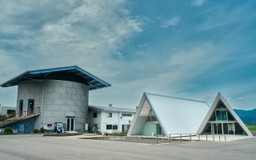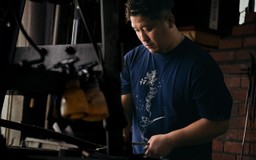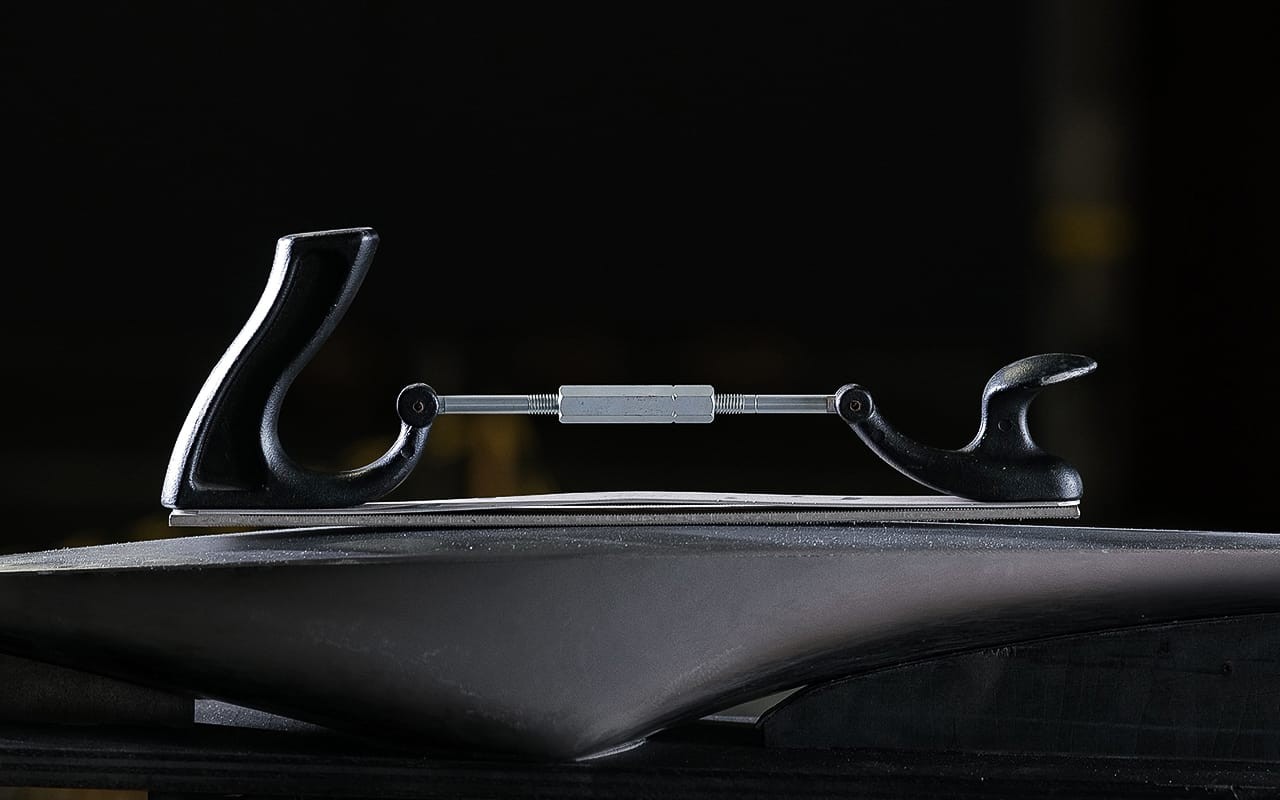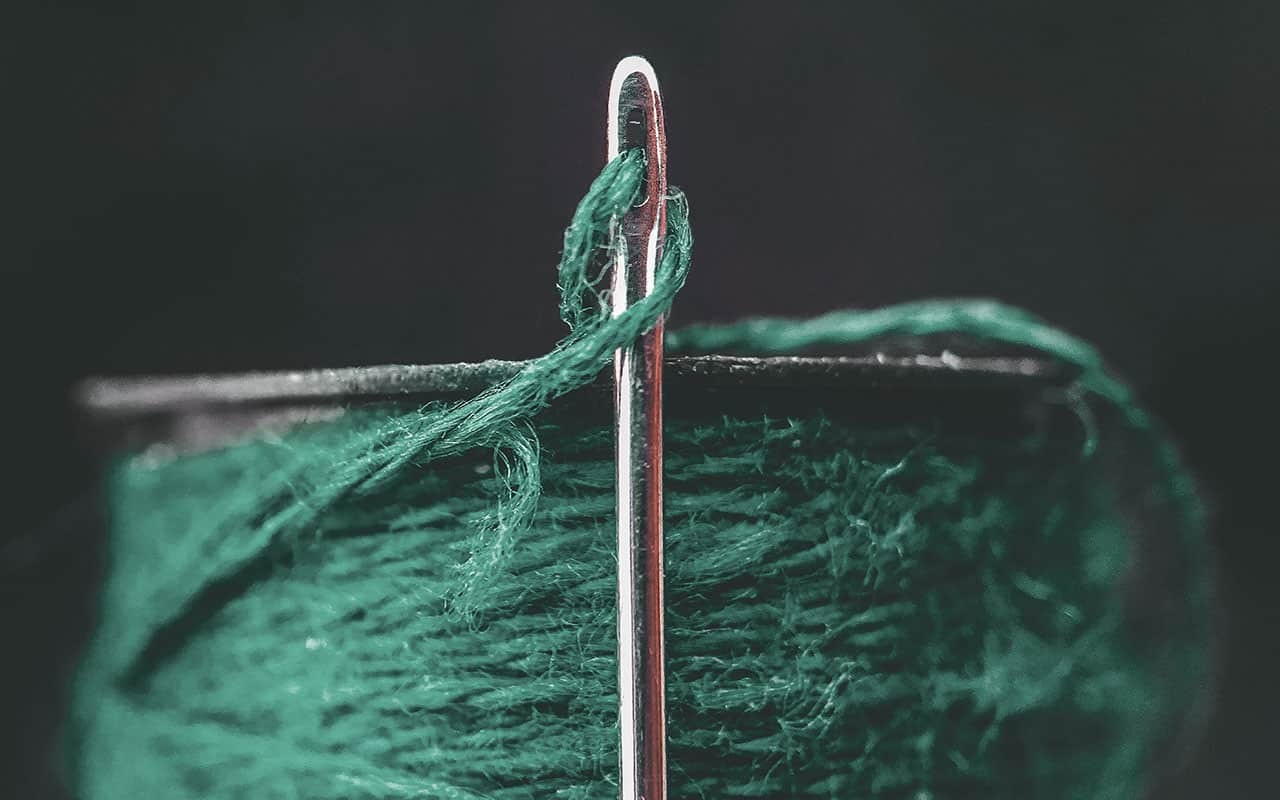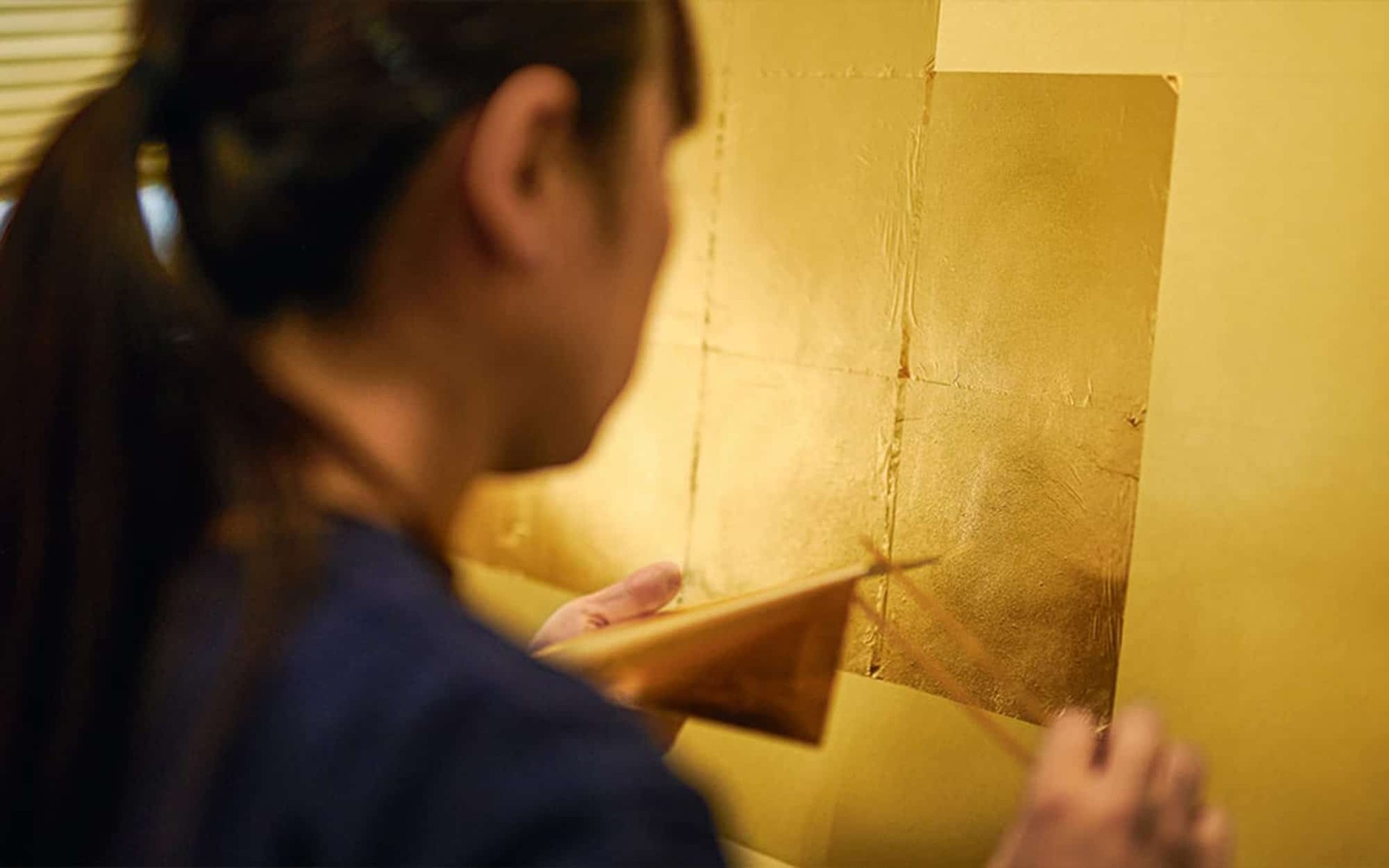INSPIRE
Precision MEETS PASSION
Takefu Knife Village is home to a community of craftspeople who have bonded together for one common purpose: to make the best knives in the world.
Formidably sharp and reassuringly expensive, Japanese knives are one of the country’s most celebrated exports, with a growing global interest in Japanese cuisine and a post-pandemic rise in home cooking bolstering their worldwide reputation. According to the Japan Times, the export value of kitchen-bladed tools in 2021 was a record-breaking ¥12 billion (up 30 percent from ¥9 billion in 2020), while 2023 search engine queries for Japanese knives are already at a five-year high.
Yet healthy eating and home cooking are just one part of the story. The strength of the Japanese knife’s popularity also lies in a sharpness of blade honed through centuries of sword-making prowess. While the rest of the world relies on mass-produced blade blanks that are increasingly sharpened by machine, Japan’s knives are forged by hand, and the owners of the hands are revered as artisans.
Having left university to become a knifemaker, Takumi Ikeda is still improving his craft some 20 years later.
“We constantly exchange ideas and skills to master our craft and pass all the knowledge and expertise we’ve gained down to the next generation. This way, the industry can flourish further.”
Takumi Ikeda, KNIFEMAKER, ANRYU KNIVES
It’s this concept of a community of artisans applying traditional methods to modern challenges that sees us taking a train to the city of Takefu, nestled in Fukui Prefecture, to visit the Takefu Knife Village, home to the beautiful Echizen Uchihamono (razor-sharp forged knives).
“Tourists come to visit us from every corner of the world,” says Michiyo Kasashima, secretary general of Takefu Knife Village, where a community of craftspeople from 13 different knife manufacturers craft forged knives using the skills and techniques handed down through the generations. “We’ve never seen such a big spike in demand for Echizen Uchihamono before.”
It’s been a long time coming. The genesis of Takefu’s knifemaking pedigree dates to the 14th century, when Kyoto swordsmith Chiyozuru Kuniyasu discovered that the area’s access to clear water and quality steel was perfect to further refine his craft. Initially, Kuniyasu made grasshooks for local blacksmiths that, alongside his Japanese sword-making skills, proved an instant hit across the nation. It wasn’t long before Takefu became synonymous with blacksmithing mastery.
A real turning point, however, came with the founding of the Takefu Knife Village. With help from renowned Japanese designer Kazuo Kawasaki, a modern industrial design concept and community spirit were forged into the centuries-old knifemaking practice.
It hasn’t all been easy going, however. Global competition from cheap knife manufacturers abroad, combined with a younger generation eschewing the craft, led sales to slump toward the end of the last century. Rather than abandon the project, however, Kawasaki and his community of craftsmen looked to each other for the solution, displaying a true challenger spirit that would eventually see them deliver a successful knife exhibition, first in Tokyo and ultimately New York. The result was global recognition and the completion of Takefu Knife Village in 1993.
Today, that deep sense of community pride and support extends much further than that displayed by those original craftsmen. Across Takefu Knife Village, the younger generation are also determined to prove themselves as knife artisans. One of them is Takumi Ikeda, who joined Anryu Knives, one of the manufacturers in the village, after finishing university. Born and raised near Tokyo, Ikeda relocated to Takefu to become a master of knifemaking.
“It’s a family business, which has a history of almost 150 years since its foundation,” says Ikeda. “In my childhood, I watched my grandpa and uncle forging steel knives. It felt right to take up this profession in this town.” Twenty years have passed, but Ikeda maintains that there’s always room for improvement, for both himself as an artisan and the wider industry.
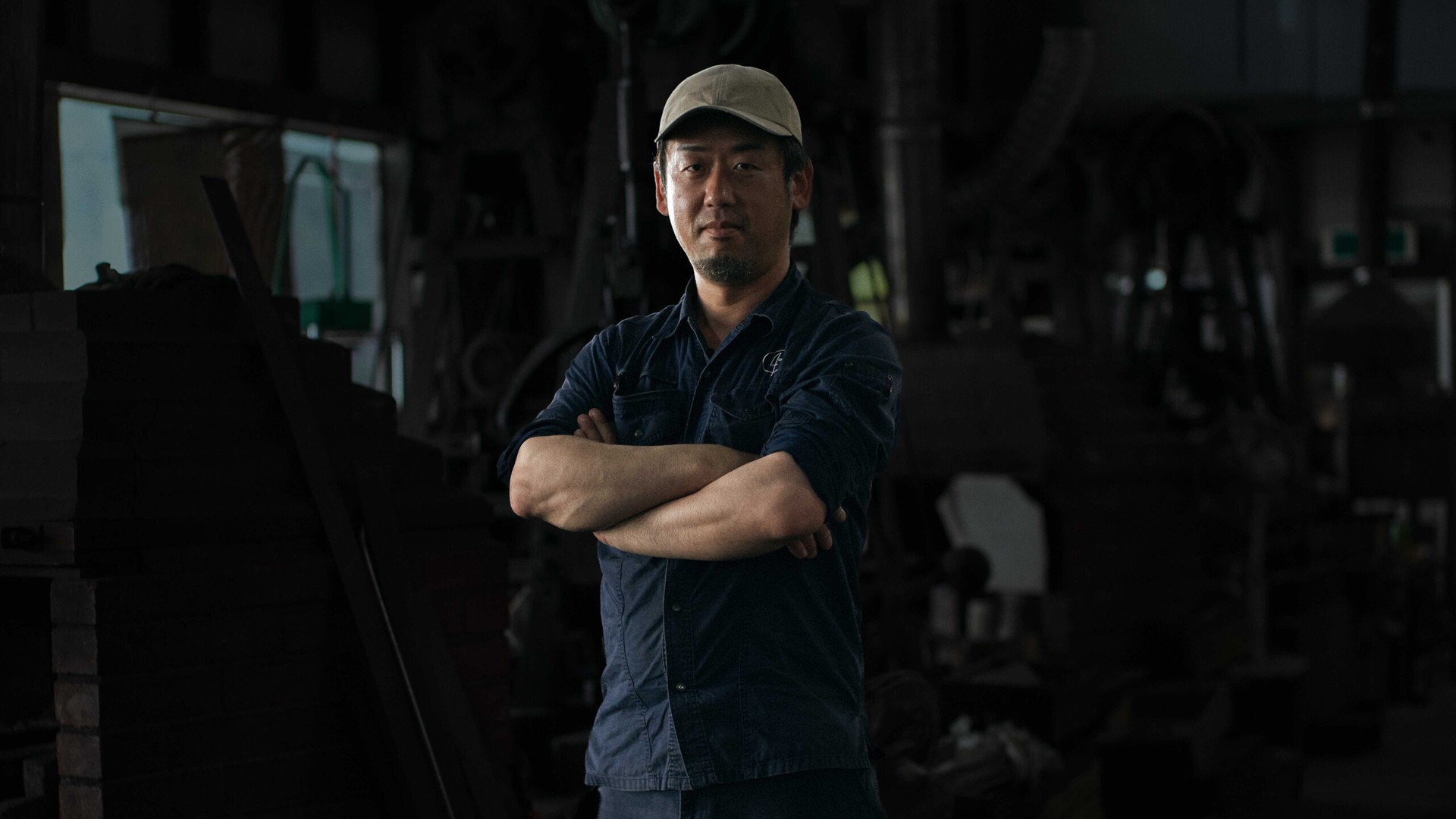
“Knives have always been a cornerstone of craftsmanship in human history. Without knives, none of the crafts that we have today would have come into being.”
Yoshihiro Yauji, KNIFEMAKER, KUTSUROGI BY Yoshihiro Yauji
“What’s so special about this village is that there’s a culture where you’re encouraged to learn from each other whichever stable you belong to and regardless of your age,” says Ikeda, making it clear that there is no end to the learning process. “We constantly exchange ideas and skills to master our craft and pass all the knowledge and expertise we’ve gained down to the next generation. This way, the industry can flourish further.”
Like Ikeda, Yoshihiro Yauji also represents the next generation of craftspeople in Takefu, taking on a mission to not only keep the true essence of the long-established art intact, but also to turn it into a more sustainable business practice.
Like Takumi Ikeda, knifemaker Yoshihiro Yauji is passionate about modernizing the centuries-old craft of knifemaking.
“I chose knifemaking as a profession because, in my view, knives have always been a cornerstone of craftsmanship in human history,” Yauji says. “Without knives, none of the crafts that we have today would have come into being. It’s a mother tool of all the tools that have made all the crafts happen, and that fact has fascinated me till this day. We also need to adapt to today’s climate and try to become more productive and efficient as an industry. There are parts of the process that need to be looked at and modernized. If young people find our practice obsolete and worthless, then this particular tradition of craftsmanship would be lost forever.”
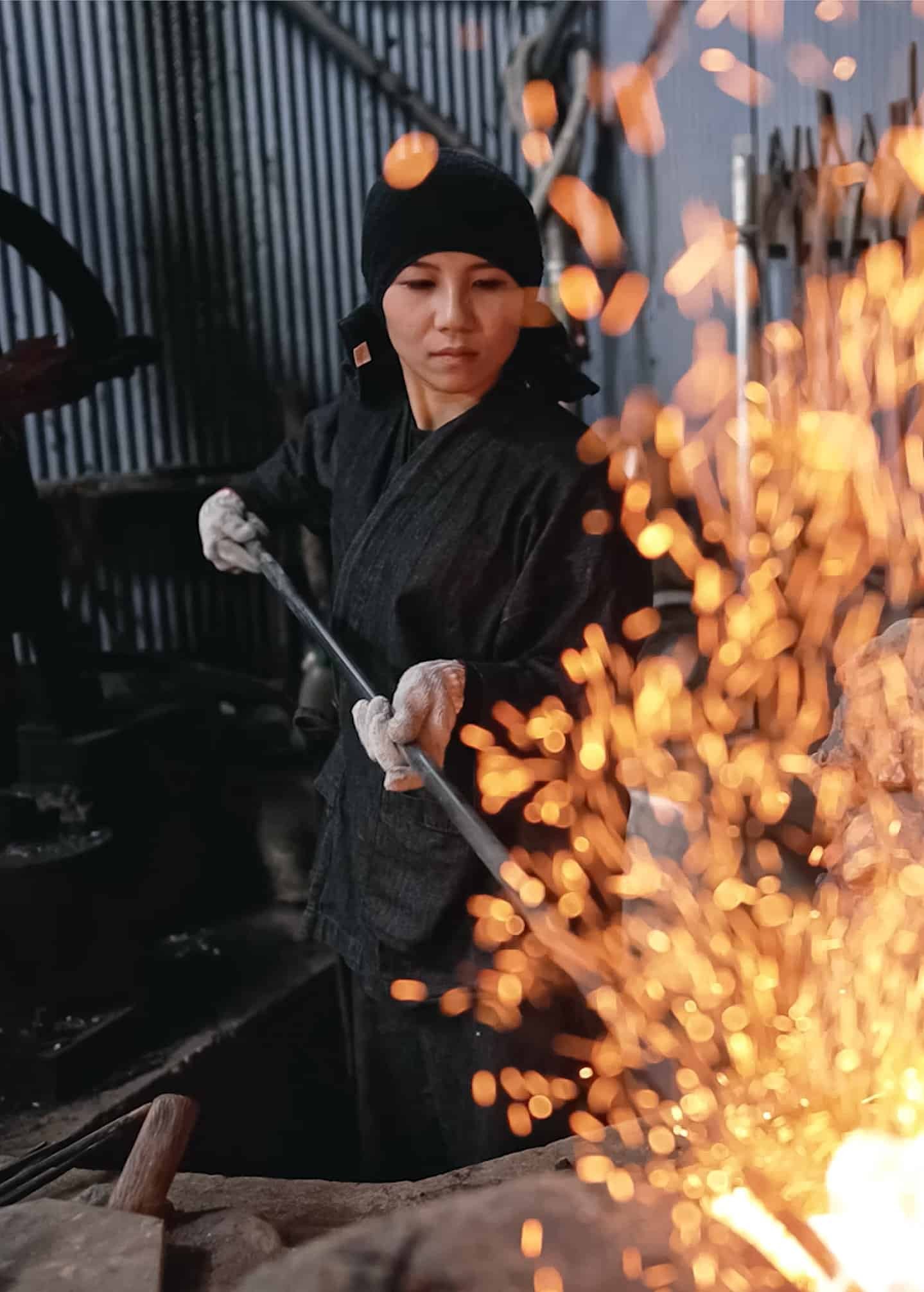
The One and Only
As with many craft traditions, knifemaking is a male-dominated business. Nodoka Hirata, however, is here to change that.
One of the most important processes in knifemaking is an iron-making practice called tatara, where master blacksmiths create tamahagane (precious steel). This is renowned as one of the leading source materials for crafting the best Japanese swords and other highly sought-after products. Only a fraction of today’s blacksmiths have mastered the tamahagane-making technique, and Hirata is thought to be the only female in the business.
“I used to watch my husband—also a blacksmith—do it all by himself, but it was a lot of hard work so I joined him to help,” Hirata says. “That was how it all started. To untrained eyes, it might look like I’m repeating the same process over and over to make tamahagane. But, actually, I make the tiniest of changes in my approach depending on what condition the steel is in.
“There is no other woman that I know who has mastered this tatara technique, so I’m very honoured to be the only female in Japan to produce this special steel.”
Want to see more? Step into Hirata’s workshop and witness a master at work here.
Words Shogo Hagiwara / Images Keisuke Ono
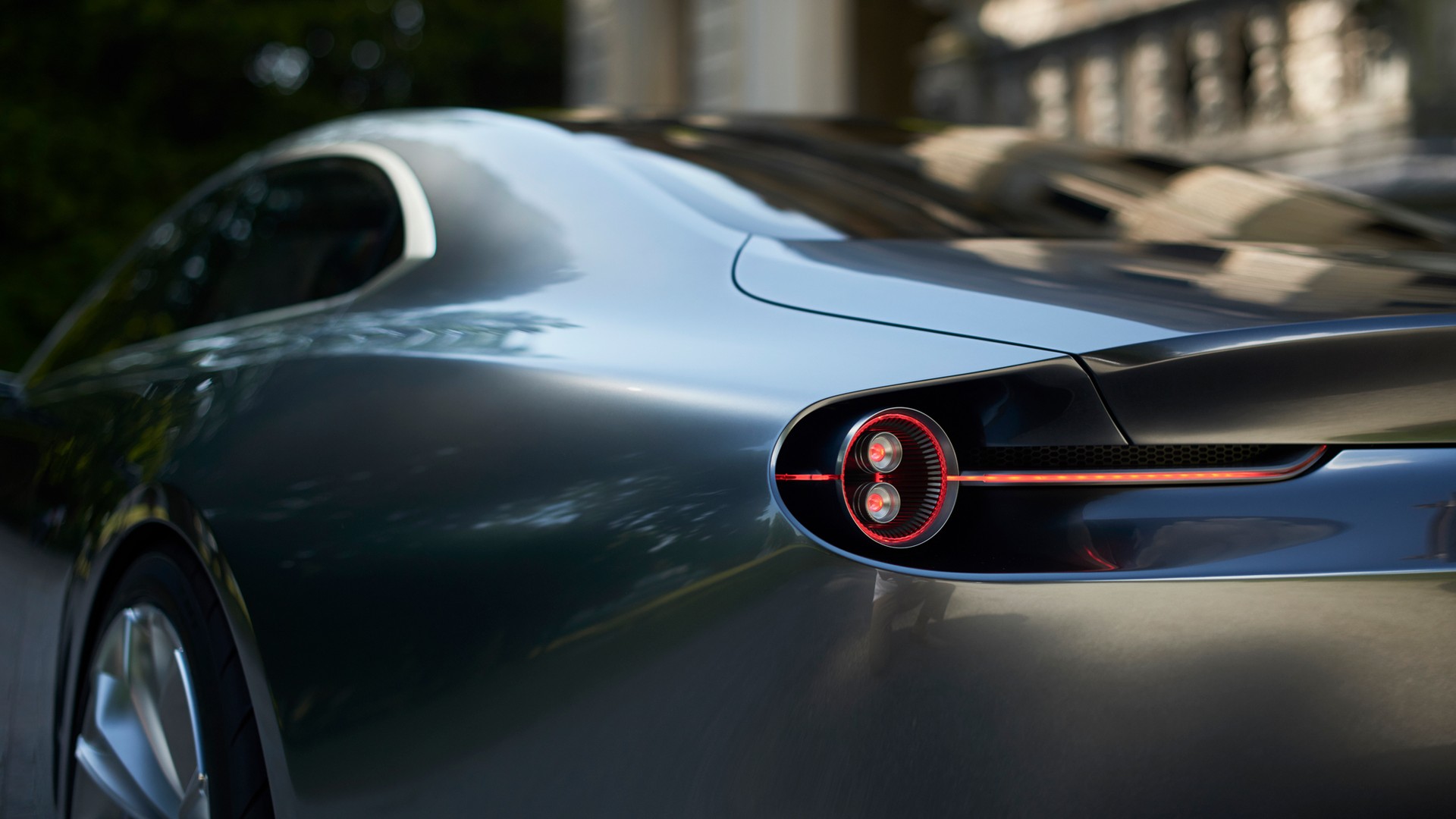
find out more
